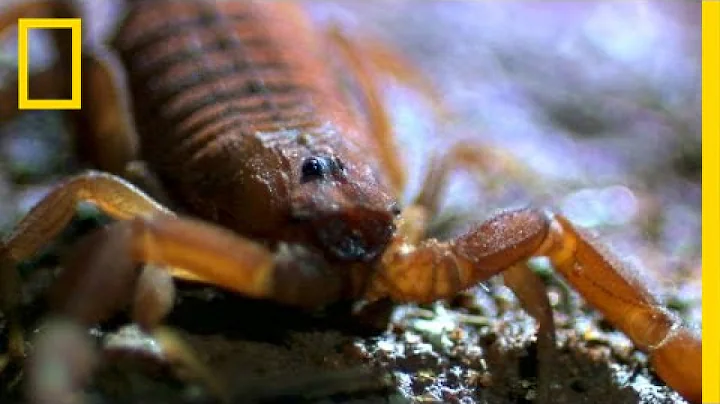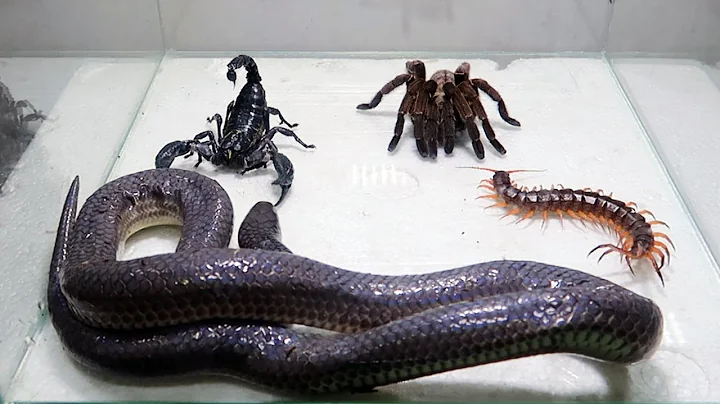
58-year-old Wayne is a blackwater diver from Singer Island, Palm Beach, Florida. One night, when he and his companions dived to a depth of more than 150 meters on the seabed near Palm Beach, Florida, they accidentally discovered a small, shiny, colorful fish in the belly of a translucent sea creature.
Wayne said: "It may be scary to dive into the unfathomable depths of the sea because the only light here comes from the camera's flash. But the feeling of not knowing what I will encounter excites me." He also said: "The beautiful creatures under the sea are very novel to me. If they are interesting or can arouse some emotion in me, I will press the shutter."

It was a rare opportunity to capture such an interesting picture. There are many wonderful animals in the vast ocean, just waiting for everyone to go underwater and take pictures! Today, the editor of Xunyuji will bring you the top ten most beautiful marine animals . If you encounter it next time, don’t miss it~
Lilac polyps

Lilac polyps are also called glove polyps, and there are eight of them. Tentacles. These stunning polyps are found in the Indian and Pacific Oceans and come in brown, red, pink, white and green colors. The smaller ones are lilac polyps, while the larger ones are often referred to as glove polyps. Regardless of size, they all have eight tentacles. According to the editor of Xunyu Ji, they live on iodine, mysid shrimp, planktonic microorganisms and trace elements. They usually live in groups and require a moderate amount of light. They grow rapidly on coral reefs and rocks.
Saxigram mushrooms

These mushrooms are like paint from a painter's palette spread across the ocean, and they come in alluring colors of red, orange, purple and green. The red saxifraga mushrooms are the rarest and most valuable. Different colored saxifraga mushrooms require different care. Green saxifraga is a type of mushroom coral with spots on its surface that is a vibrant green color. The Atlantic and Caribbean green saxifragi are classified as Florida saxifraga, while the green saxifragi in the Pacific are classified as Yuma saxifraga. Green saxifraga mushrooms are firm mushrooms that harden slowly. Orange tiger ear mushrooms are relatively abundant. The Yuma saxifraga is found in the Pacific and Indian Oceans, and the Florida saxifrag is found in the Caribbean. Red saxifraga mushrooms are more exotic, more precious, beautiful and showy. They are sensitive and not as hard as other types of coral. The editor of Xunyuji reminds everyone that you must be careful when handling them. Small tears on red tiger ear mushrooms can also lead to bacterial infection.
tube-dwelling worm

Who would believe that these beautiful bright feathers are a type of worm called a feather duster worm? Feather duster worms are like an old-fashioned feather duster, with all parts except the head in a tube filled with sand. The tube on the worm's head has two crowns, which are the organs that allow it to breathe and eat. These things hidden in the tube are small but sensitive and can detect danger. Beautiful red, orange or brown sponges wander around the worm, adding a bit of beauty to it. Finger coral
Finger coral is a beautiful coral that looks like a finger. It has many names, such as finger leather coral, Nobby finger leather coral, devil's hand coral, cabbage leather coral, etc. They come in a variety of colors, such as brown, tan, yellow, green, pink, and gray. They originally belonged to the Indian and Pacific Oceans. These unique corals, which are 1-2 inches in size, draw nutrients from a type of algae that lives inside the coral and survives through photosynthesis. They also absorb nutrients from tiny plankton. What they look like depends mainly on the strength of the ocean currents.
Leather Mushroom Coral

Leather Mushroom Coral belongs to the soft coral family. Other common names include Green Toadstool Coral, Umbrella Coral, and Elephant Ear Leather Coral. Like other corals, they come in many colors, including brown, cream, and deep red. The editor of Xunyuji saw that this kind of beautiful mushroom coral looks like folded leather. At night and when eating in the water, they will reveal their pedicel-like tentacles.They are colonies of marine animals that provide nutrients for them.
Cup Coral

Cup Coral is a beautiful coral from the deep sea. They are not a reef-dwelling species and live off zooplankton. Their translucent tentacles extend at night. Cup corals are widely known as the flowers of the sea and are famous for their vibrant colors and shapes. Their most common shapes are cups and plates.
Big Brain Coral

Big Brain Coral has an oval-shaped heavy frame with a conical chassis. Also known as stacked brain corals or pit corals, they are large polyps of polyps. This beautiful coral comes in red, yellow, brown, green, and blue. They are shaped like the number 8 or a clock. At night, tentacles are ejected from its mouth to protect itself. They are about 80 mm long and have 2 or 3 mouths. They survive through photosynthesis and do not need feeding. Red ones require less light than green ones. The editor of Xunyu Note learned that it is easy for us to collect such corals because they like to stick to coral reefs, shells and dead corals.
Bubble coral

Bubble coral is very beautiful. Many bubbles will appear in the water that is not moving. This is how the name of bubble coral comes. They require light to swell and expand, and when open during the day, they look much like bubbles, pearls, or grapes. When deflated you can see they have a hard skeleton. These corals are very fragile and can break if touched, so be careful with their tentacles when handling and collecting them. Bubble corals are mainly found in the Red Sea, Indian Ocean and Pacific Ocean.
Christmas tree worm

Christmas tree worm is very small and is a kind of tubeworm . These fascinating corals come in many colors, including yellow, orange, blue and white, and are widely distributed in tropical oceans around the world. The colorful spirals of this worm are actually high-density breathing structures. It has no appendages specifically designed for movement and swimming, and cannot swim outside the tube. They have two beautiful crowns that make them look like Christmas trees, hence their name. These crowns are actually their mouths, which are very sensitive and they will react immediately even to shadows. The tube is their home.
Bulb ascidian

Bulb ascidian is a colonial sea squirt. Its internal yellow and white organs can be seen from the transparent coat, which looks like a light bulb. This is where the name Bulb ascidian comes from. They are mostly found along the coast of Norway, but are widely distributed in the Atlantic Ocean, North Sea, English Channel and Mediterranean Sea. They are often loosely packed together and are cylindrical in shape, 4 cm long. They grow violently in the winter and revive in the summer.
The ocean is the most beautiful part of our world. The ocean is breathtakingly beautiful. It is full of life, colorful and full of attractive art. The gorgeous deep sea water, lovely fish, stunning corals, mollusks , mushrooms and brightly colored marine animals have attracted countless nature lovers and photographers to go deep into the seabed, just to see this wonderful and beautiful part of the world.
[Looking for Fishing, bringing the ocean into life]










![Ocean Reef Park Beach on Singer Island, Florida [4K] 🌴 🏖️ - DayDayNews](https://i.ytimg.com/vi/ZNTu6IlvOng/hq720.jpg?sqp=-oaymwEcCNAFEJQDSFXyq4qpAw4IARUAAIhCGAFwAcABBg==&rs=AOn4CLAKzqp9JPLb1cKIEOnwNSmXlnLJ2g)










